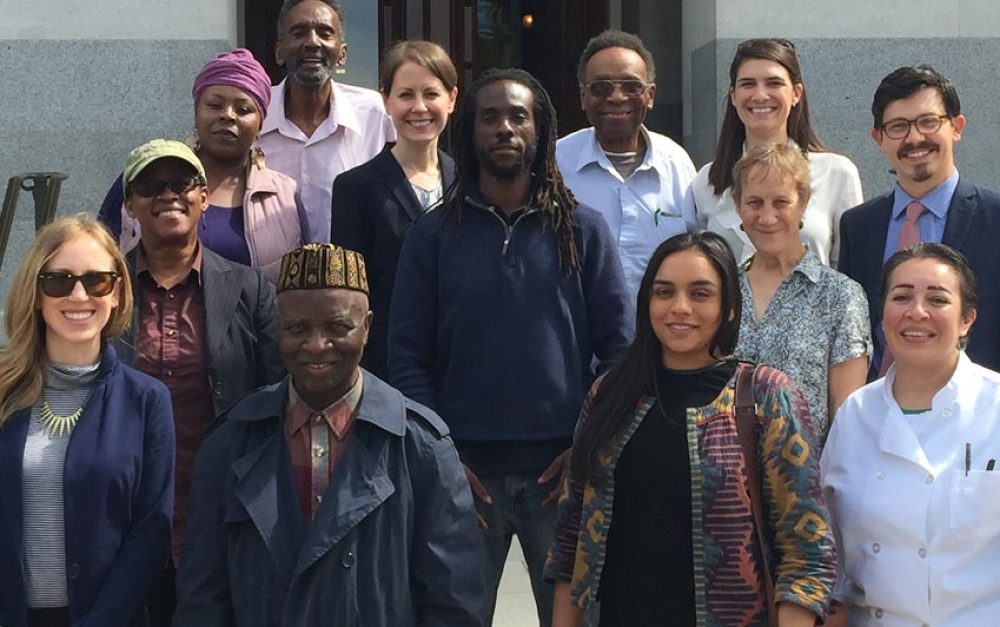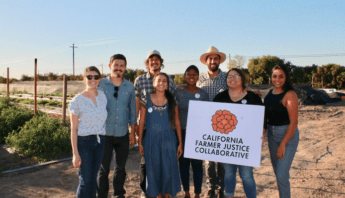Last week, legislation to address historic racial inequities in agriculture cleared a major hurdle in California. The Farmer Equity Act passed with just a few dissenting votes, 72-4. PAN has been supporting the farmers leading the charge on this bill, following their lead on how to begin addressing the long history of systemic racism in agriculture.
Given deep, historic inequities, it’s no surprise that farmers of color in California currently receive fewer state and federal resources — and continue to face barriers in accessing, land, water and markets. And if the Farmer Equity Act becomes law, it will take steps to rectify that injustice, ensuring farmers of color have greater access to resources in the state and that they have a designated advocate in the California Department of Food and Agriculture (CDFA).
A long-standing problem
While racism in agriculture has been a reality since our country’s inception, federal agencies started taking note just a few decades ago. In the mid-1990s, a report commissioned by the U.S. Department of Agriculture (USDA) confirmed that the largest loans went to corporations and white male farmers, and 97% of disaster payments went to white farmers. The report stated that “minorities received less than their fair share of USDA money for crop payments, disaster payments, and loans.”
Later reports from USDA found the agency unable to address civil rights complaints, which led to the eventual Pigford v. Glickman case resulting in payouts to over 13,000 farmers of color affected by systemic racism.
Efforts in the 1990 Farm Bill, and subsequent bundles of legislation, led to more federal resources specifically for “socially disadvantaged” farmers — and provided for the hiring of USDA staff meant to address these issues. But payouts, small grants and a handful of national staff haven’t been able to address the sometimes monumental challenges socially disadvantaged farmers and ranchers face.
This is particularly true in California, where the diversity of farmers is growing dramatically. And according to the 2012 Ag Census, farmers of color in California tend to farm smaller farms, earn less money on average and receive 36% less in government funding than their white counterparts.
Monterey Bay strawberry farmer Javier Zamora — who immigrated to the U.S. when he was 20, built his farm from scratch and now employs 30 people — recently shared his perspective with the Assembly Agriculture Committee:
“It’s hard enough for someone like me with my broken English to do the basics of farming, much less fill out the paperwork to access grants and opportunities to do something even greater for our community.”
At the same hearing, Northern California farmer Mai Nguyen shared stories of people unwilling to buy from her at farmers’ markets, suspecting she couldn’t speak English or lacked the knowledge to grow organic food. Nguyen also said cooperative extension agents were ill-prepared to support farmers growing different, culturally appropriate crops.
Long overdue
California’s Farmer Equity bill is uniquely intended to address the issues of historic inequities facing farmers throughout the state. It aims to expand the scope of who serves on boards and committees in CDFA, and to ensure farmers of color have access to federal resources and grant opportunities through new programs like Healthy Soils or the State Water Efficiency and Enhancement Program.
Kristyn Leach, a Korean-American farmer in Sunol explained:
“Sustainable and local agriculture runs deep in the traditions of California’s immigrant farmers and farmers of color, but so do the inequities in accessing grant programs for environmental stewardship and market enhancement.”
What’s most exciting is that the process is being driven directly by farmers — collectively called the California Farmer Justice Collaborative — working with legislators each step of the way.
The Farmer Equity Act (AB 1348, Aguiar-Curry) is now in the Senate for consideration and will likely have a hearing later this month. The real question is, will the California legislature support farmers of color to get their fair share?







